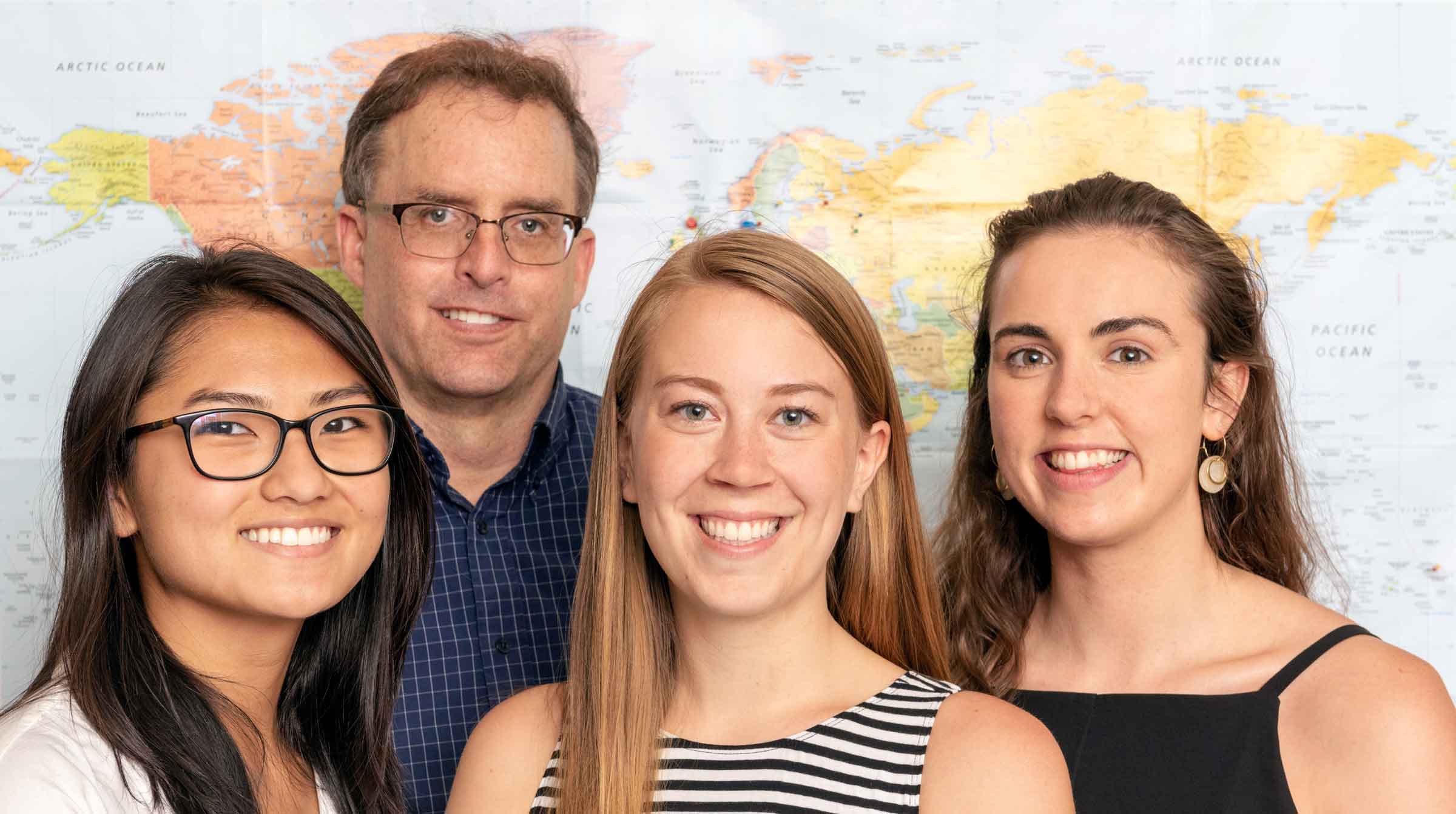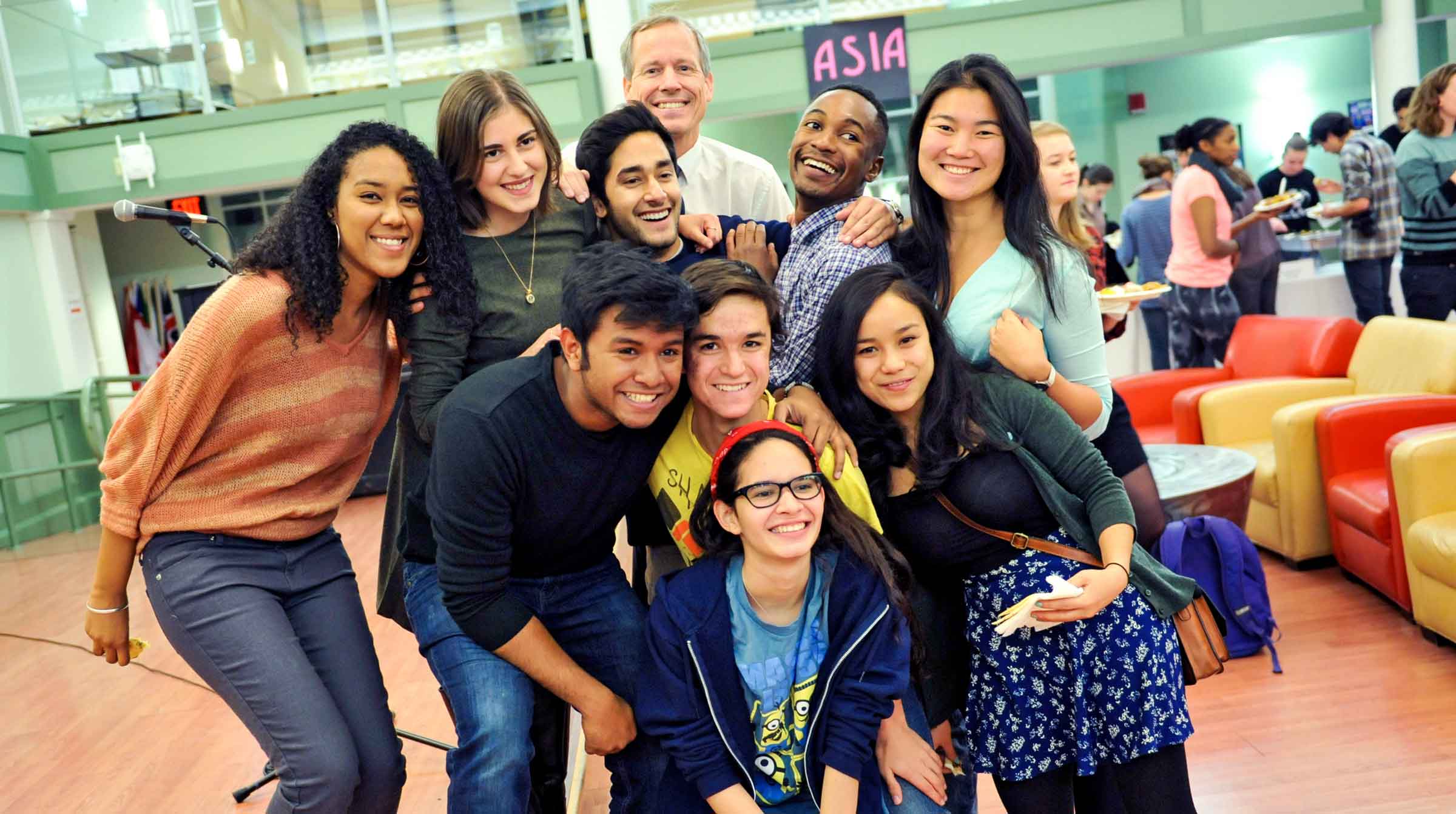Study Shines Spotlight on International StudentsVassar seniors present findings at Mexico City education conference
Study Shines Spotlight on International StudentsVassar seniors present findings at Mexico City education conference
Vassar’s international students are generally pleased with the services and support they receive, and the college offers them ample opportunity to take pride in their culture. But those who arrived with a limited mastery of English say they faced some academic challenges in their first year. And others, particularly those from largely homogeneous societies, say they had to adapt to being labeled as minorities in American culture.

These are some of the findings highlighted in a study that three students, Anna Abrams ’18, Nora Kyrkjebo ’18 and Lilia Hutchinson ’18 completed over the past year. The budding researchers administered a written survey to 62 international students and conducted in-depth interviews with 29 of the respondents. In March, they presented the findings of their work at the Comparative and International Education Society’s annual conference in Mexico City. The project was overseen by Education Prof. Christopher Bjork with consultation from Andrew Meade, assistant dean of campus life and international services.
He noted that virtually all of those attending the conference were graduate students or college professors and experts in the field of education development. He said he was impressed by how his students’ work was received. “Many people at the conference told me the depth of their research was worthy of a masters thesis,” Bjork says. He and the students will co-author a paper on their findings and submit it to a peer-reviewed academic journal later this year.
“The results of the study were extremely positive with respect to the quality of the academics and the support provided by International Services,” Bjork says. He noted that many students who were interviewed pointed to events such as Kaleidoscope, an annual event that celebrates cultural diversity featuring international cuisine and music, as evidence that the college values their contributions to campus culture.

Meade says the study provides valuable data for Vassar as the college takes steps over the next few years to add more international students and expand its exploration of global issues. He noted that Vassar had about 225 international students on campus 10 years ago compared to about 325 this year. By 2022, the college expects to accept more than 400. “As we move forward with our Engaged Pluralism Initiative and ramp up plans to accept more international students, we have to continue to identify issues affecting these students.” he says.
Meade was aware that some students who were not fluent in English sometimes had difficulty in their first semester in becoming engaged in class discussions. This is particularly true, he says of students who come from secondary schools that emphasize lectures in their teaching rather than animated class discussions. “If you’re an international student from this kind of background, and you’re an introvert who hesitates to ask for help, you’re likely to struggle initially,” he says.
Meade says the research conducted by Abrams, Kyrkjebo and Hutchinson was particularly useful because no study this comprehensive had been done recently at a small, liberal arts college. “I was blown away by the energy and scholarship of the students who did this survey,” Meade says. “Bigger schools with many more international students have different issues. We’re small enough to know all the students’ names and keep track of them on a more personal basis. It’s possible to build a community, and that’s what we strive to be doing at Vassar.”
Abrams, a French and Francophone Studies and International Studies double major from Montpelier, VT, said she and Kyrkjebo and Hutchinson hatched the idea for the project while they were taking Bjork’s, class on international education last spring. “We discovered there’s very little literature in the field, especially on how international students fare at small liberal arts colleges,” Abrams says.

“After we spoke to a few of the students, a few themes began to emerge – academics, communication, and campus interactions,” said Kyrkjebo, a Science, Technology and Society major from Norway and Singapore. The study showed that as the international students became more involved in campus activities such as clubs and sports, their comfort level rose accordingly. And because the student-faculty ratio is small, most said they formed strong relationships with many faculty members. Sometimes, Abrams noted, this support came from less obvious sources. “One student who is Albanian said he met an employee at the Deece [formerly the All Campus Dining Center, now renamed Gordon Commons] who was Albanian, and he connected with the worker’s family,” she says.
Hutchinson, an Urban Studies major from Omaha, NE, says many of the students she interviewed said they were first introduced to the term, “people of color” upon arriving at Vassar. “This was a confusing negotiation of identity,” she said. “Many lived in countries where they were either the racial majority or where race was not as big an issue as it is in the United States.”
Hutchinson says taking part in the project and in the presentation at the Mexico City education conference was inspiring. “The reception we received after our panel discussion was really empowering and reassuring,” she said. “It was never a goal of mine to complete academic research while at Vassar, but I’m appreciative to have had the opportunity.”